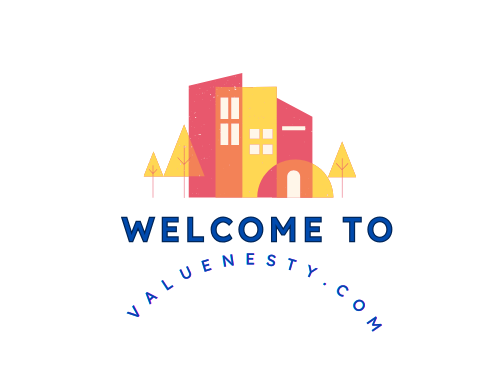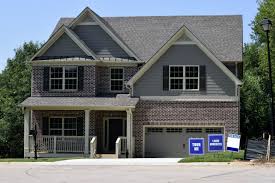Introduction:
Condo association insurance plays a crucial role in safeguarding the interests and assets of condominium communities across the United States. As condominium living continues to grow in popularity, so does the necessity for comprehensive insurance coverage tailored to the unique needs and challenges of these communities. This introduction explores the importance of condo association insurance and provides an overview of the key coverage essentials that will be detailed throughout this article.
Importance of Condo Association Insurance:
Condominium associations, also known as HOAs (Homeowners Associations), are responsible for managing and maintaining the shared spaces and common areas within a condominium complex. These responsibilities often include exterior structures, shared amenities such as swimming pools or gyms, and sometimes even the building’s structure itself. Given the communal nature of condominium living, it’s essential to have insurance coverage that protects against various risks and liabilities that can affect the entire community.
One of the primary reasons condo association insurance is vital lies in its ability to provide financial protection against unforeseen events and liabilities. Imagine a scenario where a major storm damages the roof of a condominium building or a visitor sustains an injury while using the community’s facilities. Without adequate insurance, the financial burden of repairs or legal liabilities could fall on individual unit owners or the association itself, potentially leading to significant financial strain or even legal disputes.
Furthermore, condo association insurance helps ensure the continuity of essential services and amenities within the community. By covering common areas and shared facilities, insurance policies help maintain the quality of life and property values for all unit owners. This aspect is particularly crucial in attracting new residents and maintaining a positive reputation within the real estate market.

1:Understanding Condo Association Insurance:
Condominium association insurance, often referred to as HOA (Homeowners Association) insurance, is a crucial component in protecting the financial interests and liabilities of condominium communities across the United States. This comprehensive guide delves into the complexities of condo association insurance, elucidating its definition, purpose, key characteristics, types of coverage offered, factors impacting coverage needs, choosing the appropriate insurance provider, real-life case studies, and strategies for effective risk management.
What is Condo Association Insurance?
Condo association insurance is a specialized insurance policy designed to protect condominium associations and their members (unit owners) from various risks and liabilities associated with communal living spaces and shared amenities within a condominium complex.
Definition and Purpose:
At its core, condo association insurance serves to provide financial protection against unexpected events and liabilities that could impact the entire community. It covers common areas, shared structures, and sometimes even the building’s exterior against damages and losses.
Key Features and Benefits:
- Financial Protection: Safeguards against property damage, theft, and vandalism affecting common areas.
- Liability Coverage: Shields the association from legal claims and lawsuits arising from accidents or injuries that occur within the shared spaces.
- Risk Management: Helps mitigate potential financial burdens on individual unit owners by spreading risks across the community.
- Community Continuity: Ensures the continuity of essential services and amenities by facilitating repairs and maintenance when incidents occur.
2:Types of Coverage Provided:
Condo association insurance typically includes several types of coverage tailored to meet the specific needs of condominium communities:
Property Coverage:
Property coverage extends protection to the physical structures and common areas within the condominium complex. This includes but is not limited to:
- Buildings: Coverage for the exterior structure of the buildings, including roofs, walls, and foundations.
- Common Areas: Insurance for shared amenities such as swimming pools, fitness centers, hallways, and parking lots.
- Fixtures and Installations: Protection for installed fixtures like elevators, fire alarms, and HVAC systems.
Liability Coverage:
Liability coverage shields the condo association from legal liabilities arising from accidents or injuries that occur within the common areas. It typically covers:
- Personal Injury: Costs associated with bodily injuries sustained by visitors, residents, or guests.
- Property Damage: Expenses related to damage caused to third-party property within the common areas.
Directors and Officers Coverage:
Directors and officers (D&O) coverage protects board members and association officials from personal liability arising from their decisions and actions while serving in their official capacities. It covers legal fees, settlements, and judgments resulting from allegations of mismanagement or negligence.
3:Understanding Master vs. Individual Policies:
Condo association insurance is structured through two main types of policies: master policies and individual unit owner policies. Understanding the distinction between these policies is crucial for determining coverage responsibilities and ensuring comprehensive protection for all parties involved.
Differentiating Between Master Policy and Unit Owner Policies:
- Master Policy: Typically covers the condominium complex as a whole, including common areas, exterior structures, and liability risks that affect the entire community.
- Unit Owner Policies: Individual unit owners are responsible for insuring their personal belongings, interior structures, and personal liability risks not covered under the master policy.
Coverage Responsibilities:
- Master Policy: Managed and paid for by the condo association using funds from association dues or fees collected from unit owners.
- Unit Owner Policies: Purchased independently by individual unit owners to cover personal possessions, interior improvements, and additional liability protections specific to their unit.
4:Key Coverage Essentials:
Understanding the essential components of condo association insurance helps ensure that both the association and individual unit owners are adequately protected against potential risks and liabilities.
Common Elements Coverage:
Common elements coverage encompasses insurance for shared spaces and structures that are collectively owned by all unit owners. It includes:
- Roofs, Sidewalks, and Parking Lots: Structural elements and exterior areas that are part of the communal property.
- Shared Amenities: Facilities such as clubhouses, gyms, and pools that are accessible to all residents.
Unit Owner Coverage:
Unit owner coverage focuses on protecting personal belongings, interior fixtures, and additional liability risks specific to individual units. This coverage typically includes:
- Personal Property: Furniture, appliances, clothing, and other personal items located within the unit.
- Interior Fixtures: Upgrades, renovations, and improvements made by the unit owner within their specific unit.
Additional Living Expenses Coverage:
In the event of significant damage or loss that renders a unit uninhabitable, additional living expenses coverage provides financial support for temporary housing, meals, and other necessary accommodations until the unit is repaired or replaced.
5:Factors Influencing Coverage Needs:
Several factors influence the specific insurance needs of condominium associations and individual unit owners:
Size and Type of Condo Association:
- Community Size: Larger communities may require higher coverage limits and more extensive insurance policies to adequately protect all shared spaces and amenities.
- Complexity of Amenities: Condominiums with extensive amenities such as pools, gyms, or common areas may necessitate specialized coverage options.
Location and Risks:
- Geographical Location: Properties located in areas prone to natural disasters (e.g., hurricanes, earthquakes) or high crime rates may require additional coverage against specific risks.
- Environmental Factors: Consideration of environmental risks such as flooding, wildfire, or coastal erosion that could impact property values and insurance requirements.
Legal Requirements and Regulations:
- Local Regulations: Compliance with state and local laws governing insurance requirements for condominium associations.
- Association Bylaws: Specific provisions within the condominium association’s governing documents that dictate insurance obligations and coverage standards.
6:Choosing the Right Insurance Provider:
Selecting a reputable insurance provider that specializes in condominium association insurance is essential for ensuring comprehensive coverage and reliable claims handling. When evaluating insurance options, consider the following factors:
Factors to Consider:
- Experience and Reputation: Look for insurers with a proven track record and expertise in providing insurance solutions for condominium associations.
- Coverage Options: Assess the breadth of coverage options available to tailor policies to the specific needs of the condominium community.
- Financial Stability: Evaluate the insurer’s financial strength and ability to pay claims promptly and effectively.
Comparing Quotes and Policies:
- Policy Details: Review policy terms, coverage limits, deductibles, and exclusions to understand the full scope of protection offered.
- Premium Costs: Compare premium rates and payment options to ensure competitive pricing without compromising on coverage quality.
7:Case Studies or Examples:
Examining real-life scenarios can illustrate the practical benefits of condo association insurance and highlight the importance of adequate coverage in safeguarding community interests.
Real-life Scenarios Highlighting Coverage Benefits:
- Storm Damage: How insurance coverage helped a condominium association recover from significant storm damage to the building’s roof and shared amenities.
- Liability Claims: A case study demonstrating how liability coverage protected the association from legal expenses and settlements arising from an injury within the community.
8:Tips for Effective Risk Management:
Proactive risk management strategies can help mitigate potential risks and minimize the likelihood of insurance claims within condominium communities.
Preventative Measures:
- Routine Maintenance: Implementing regular inspections and maintenance schedules for building systems and common areas to prevent potential hazards.
- Safety Protocols: Establishing community-wide safety protocols and guidelines for residents and visitors to minimize accident risks.
Mitigating Risks:
- Emergency Preparedness: Developing and practicing emergency response plans to efficiently address unexpected events or disasters.
- Community Engagement: Encouraging resident involvement in safety initiatives and promoting a culture of responsible behavior within the community.
Conclusion:
In conclusion, condo association insurance serves as a critical safeguard for protecting the financial interests and liabilities of condominium communities and individual unit owners alike. By understanding the key coverage essentials, factors influencing coverage needs, selecting the right insurance provider, examining real-life case studies, and implementing effective risk management strategies, condominium associations can ensure comprehensive protection and sustain a secure and thriving living environment for all residents. Investing in comprehensive condo association insurance not only meets legal requirements but also fosters community continuity and enhances property values in the long run.
Faqs:
1:What is condo association insurance?
- Condo association insurance, also known as HOA insurance, is a policy that protects condominium associations and their members (unit owners) from financial losses and liabilities associated with shared spaces and common areas within a condominium complex. It typically covers structural damage to buildings, liability risks, and other communal property-related expenses.
2:Why is condo association insurance important?
- Condo association insurance is crucial because it helps protect the financial interests of both the association and individual unit owners. It provides coverage for unexpected events such as property damage, liability claims, and legal expenses, which could otherwise lead to financial strain or disputes within the community.
3:What does condo association insurance cover?
- Condo association insurance covers various aspects, including:
- Property Coverage: Structural elements of buildings, common areas, and shared amenities.
- Liability Coverage: Legal expenses and settlements arising from accidents or injuries within common areas.
- Directors and Officers Coverage: Protection for board members and officials against lawsuits related to their management decisions.
4:What is the difference between master policy and unit owner policies?
- The master policy is purchased and managed by the condo association, covering common areas and shared structures. Unit owner policies are purchased individually by owners to cover personal belongings, interior improvements, and additional liability risks specific to their unit.
5:Do unit owners need additional insurance if there’s already a master policy?
- Yes, unit owners typically need additional insurance beyond the master policy. The master policy generally covers common areas and shared structures. Unit owners need their own policies to protect personal belongings, interior fixtures, and personal liability not covered under the master policy.
6:How are insurance premiums for condominium association insurance calculated?
- Insurance premiums for condo association insurance are influenced by factors such as the size and location of the condominium complex, the types of amenities provided, the coverage limits selected, and the insurer’s assessment of the community’s risk profile (e.g., exposure to natural disasters or crime rates).
7:Are condo association members liable for insurance deductibles?
- In many cases, yes. If a covered event occurs that necessitates a claim under the master policy, the deductible is typically paid from the association’s funds. However, the association’s bylaws may stipulate that unit owners are responsible for a portion or all of the deductible related to damage occurring within their unit or due to their negligence.
8:What should condominium associations consider when selecting an insurance provider?
- When choosing an insurance provider, condominium associations should consider factors such as the insurer’s experience with condominium communities, financial stability, reputation for claims handling, breadth of coverage options offered, and ability to customize policies to meet specific community needs.
9:How can condominium associations reduce insurance costs?
- Condominium associations can potentially lower insurance costs by implementing risk management strategies such as routine maintenance of buildings and amenities, implementing safety protocols, enhancing security measures, and investing in disaster preparedness plans. Additionally, reviewing and comparing insurance quotes periodically can help ensure competitive pricing.
10:What happens if a condominium association does not have adequate insurance coverage?
- Without adequate insurance coverage, a condominium association risks facing financial burdens from unexpected events such as natural disasters, property damage, or liability claims. In such cases, the association may need to levy special assessments on unit owners to cover expenses not covered by insurance, which can lead to dissatisfaction and financial strain within the community.

